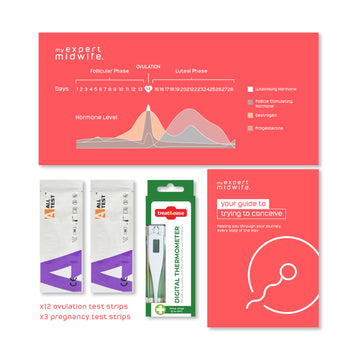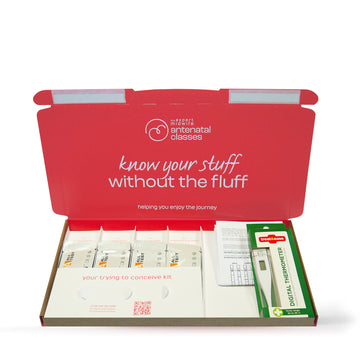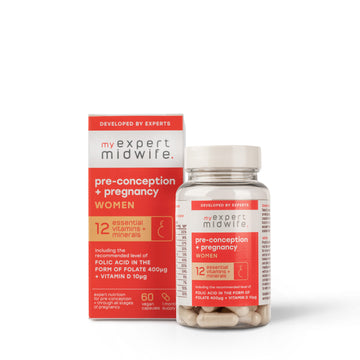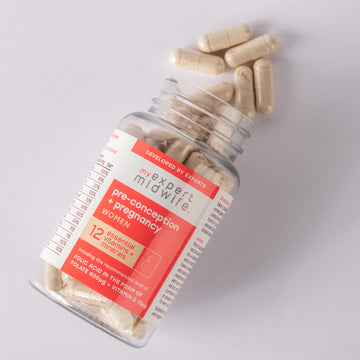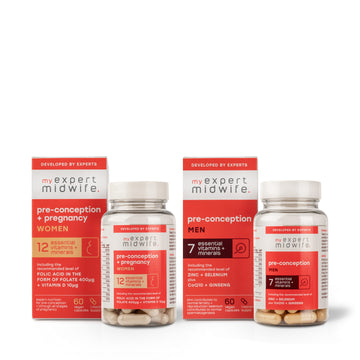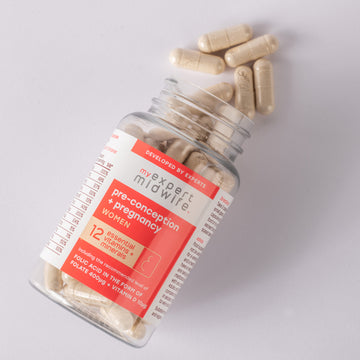Knowing when they are approaching ovulation can be relatively easy for most women, as several signs and symptoms indicate ovulation is imminent.
In this article, we’ll discuss the following topics:
- How your cervical mucus changes to a ‘sperm-friendly’ egg white consistency before ovulation
- Why taking your temperature every day can help you predict when you will ovulate
- What changes can be felt on your cervix near ovulation
- How a dull ache known as “mittelschmerz” signals an egg is ready to be released from your ovary
- What place do ovulation tests have in all of this?
What Is Ovulation?
Ovulation occurs when one of your ovaries releases a mature ‘egg’ from one of its follicles as the levels of oestrogen and luteinising hormone (LH) in your body peak.
The egg then travels through the fallopian tube, where it can be fertilised by sperm.
The chances of pregnancy increase if sexual intercourse has happened 1-3 days before ovulation, as sperm will still be alive and ‘waiting’ to fertilise the egg as soon as it is released.
In an average 28-day menstrual cycle, ovulation will occur around day 14 - that is, halfway through the cycle. In women with very irregular cycles, ovulation can be harder to predict.
Common Signs That You Are Ovulating
1. Cervical mucus
On ovulation day and the days immediately approaching it, your vaginal discharge will significantly increase in amount - usually becoming copious - and become clear, stretchy and slippery, resembling an egg white.
This is the perfect medium for sperm to survive and be transported through your reproductive system to meet your egg.
For most women, this is an obvious sign that ovulation is approaching and indicates that you are in your most fertile days, so make sure you have sex!
2. Basal Body Temperature
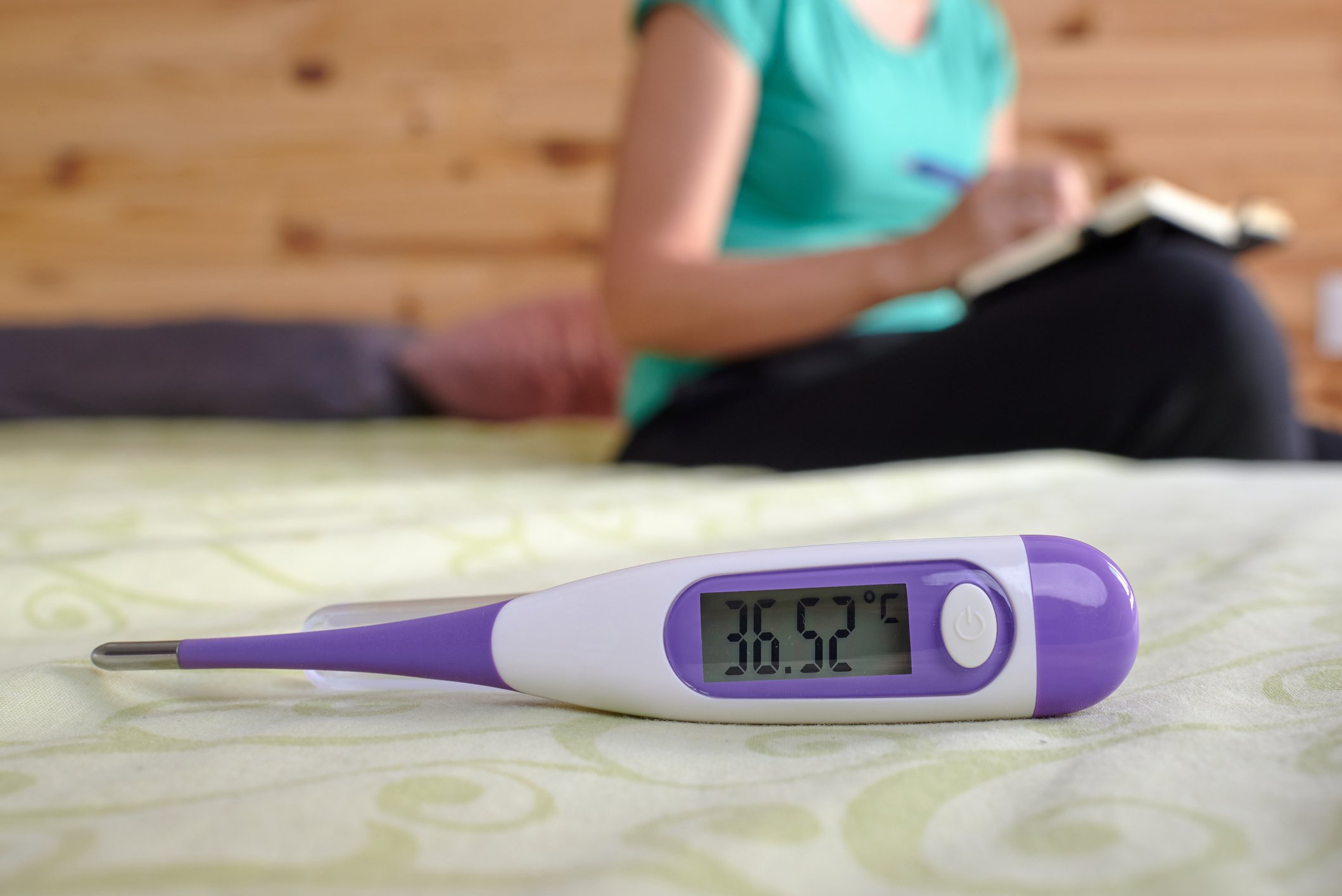
Basal body temperature (BBT) is the body temperature at rest.
An increase in BBT is experienced once ovulation has occurred and the hormone progesterone is released. BBT can rise by around 0.5 degrees centigrade and stays raised until your next period.
Tracking your BBT can help you understand possible patterns in your menstrual cycle and when you are most likely ovulating each month.
The best way to do this is to:
- Have your thermometer by your bedside table, and take your BBT at the same time every day before you get out of bed.
- Make sure it’s the first thing you do before talking or doing anything else, as this can alter your reading.
- Use the same thermometer each time for consistency, and note the temperature on your chart.
- Always take your temperature in the same place - i.e., orally, vaginally or rectally (ensure the thermometer is cleaned after each use and, in particular, take care to disinfect it if used rectally)
Read more about tracking basal body temperature here.
3. Mittelschmerz

Some women experience a dull ache on one side of their lower abdomen just before, during or, sometimes, just after ovulation. This is known as mittelschmerz, which means ‘middle pain’ in German.
Although the cause of this is uncertain, the possible irritation of nearby nerves by the fluid released with the egg is thought to play a part in it.
Mittelschmerz is not experienced by all women or at every cycle. Seeing as you could feel it during or even after ovulation, it may only be a useful symptom to look out for in some women.
4. Changes in the Cervix
The position of the cervix and its consistency (how it feels to touch) change throughout the menstrual cycle.
During menstruation, the ligaments holding the uterus relax, and, as a result, the cervix sits lower and is easier to reach.
It may also feel slightly softer, and the os (the small central opening) may be wider to allow the passage of the menstrual blood.
Building towards ovulation, and with higher levels of the hormone oestrogen present, the ligaments holding the uterus tighten and pull the cervix higher - making it more difficult to reach.
After ovulation, the hormone progesterone begins to relax the area, and you can feel the cervix lower down. You may also notice that the os feels more closed.
If you want to try and feel your own cervix, remember that everyone’s uterus can be positioned slightly differently, which can affect where the cervix is felt. If you try this regularly, you will start to understand your body, cervix and menstrual cycle.
To feel your own cervix:
- Find a private space where you feel relaxed.
- Wash your hands thoroughly.
- Insert one or two fingers into the vagina until you can feel the cervix, which should feel similar to the end of your nose.
- You can do this in a semirecumbent position, squatting or raising one foot on the toilet, chair or bed - experiment to see what works best for you.
- You may feel a slight indentation or opening in the centre - this is the os.
- Try doing this when you are relaxed, such as after a warm bath.
5. Feeling more sexual

From a survival-of-the-species point of view, nature is wise and wants you to have babies!
So, when you are approaching, and during, your most fertile days, you may notice that you feel more sexual and, perhaps, sexier. This is a great indication to have sex when you are trying to conceive.
High levels of stress, depression and anxiety may mask or inhibit this heightened libido for some women, which means that other signs may provide more assurance that they are approaching ovulation/ovulating.
6. A positive result on an ovulation strip
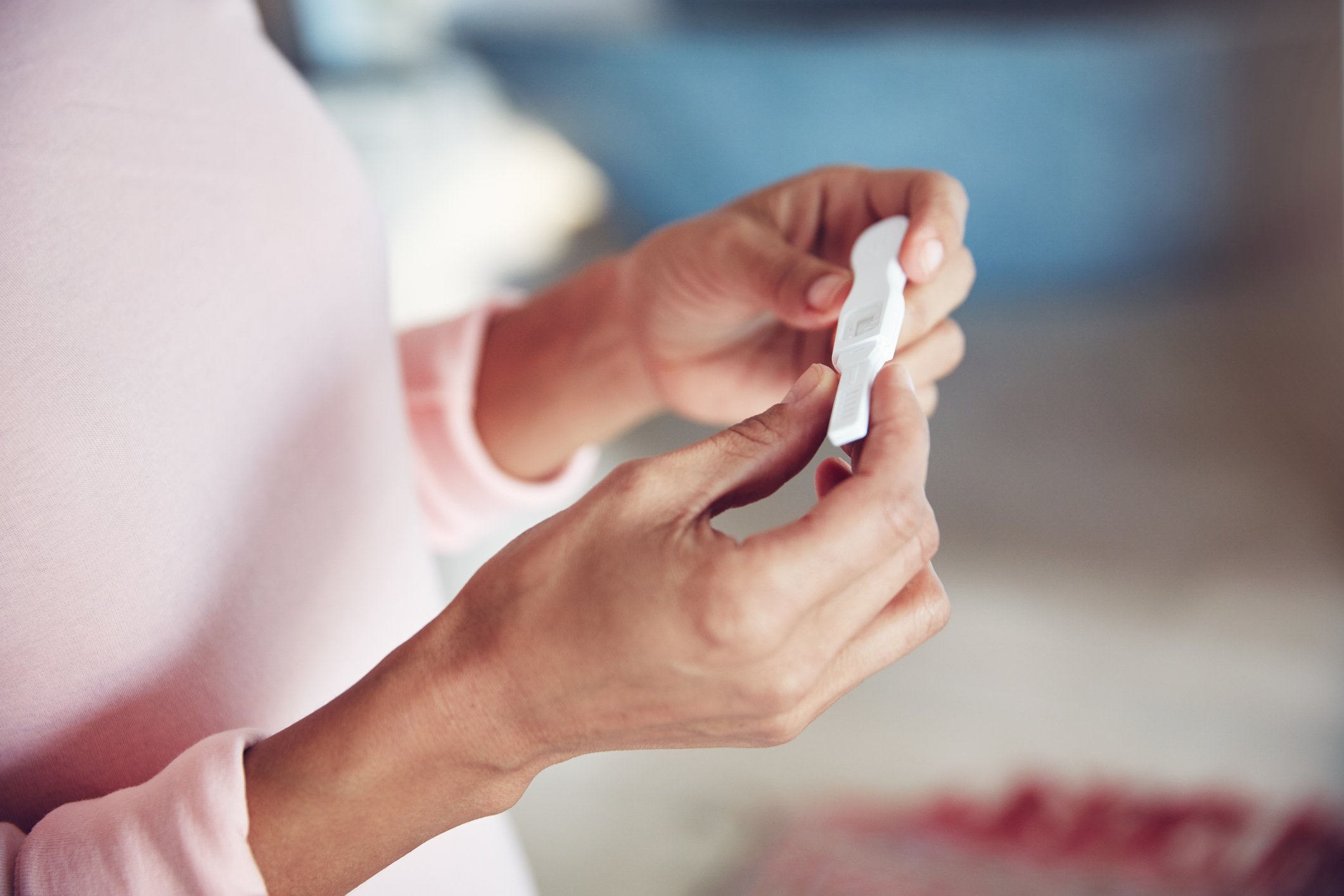
Luteinising hormone (LH) surges 24-36 hours before ovulation occurs, and this surge is what the ovulation strip checks for to predict fertility.
When the levels of LH in your urine are over a certain threshold, the ovulation stick will give you a positive result, meaning that you are most likely nearing ovulation and are, therefore, potentially fertile.
Your ‘fertility window’ can start before you get a positive result on an ovulation strip, as your ‘sperm-friendly’ cervical mucus helps keep sperm alive for a few days.
If you have polycystic ovary syndrome (PCOS), are over 40 or approaching menopause, a positive result may not necessarily indicate ovulation, as LH levels can surge or be higher and not followed by ovulation.
Also, if your cycles are very irregular, it may be difficult to know when to use ovulation tests.
Visit our trying to conceive hub to explore more information about how to get pregnant.
Frequently Asked Questions (FAQs) About Ovulation
How long after ovulation symptoms do you ovulate?
As every woman is an individual, the signs and symptoms that precede ovulation may be different and have different time scales for different women.
You do not need to - and may even be unable to - pinpoint the exact ovulation date.
As long as you are having unprotected sex every 2-3 days during your fertile days - or, ideally, throughout your cycle -there should be live sperm within your reproductive organs, ready to meet your egg when it is released.
How many days after ovulation can you get pregnant?
When a woman ovulates, the egg that has been released only has 12-24 hours to be fertilised, which means pregnancy can happen up to a day following ovulation.
This is why having intercourse during your fertile window is the best way to increase your chances of becoming pregnant. Read more here about the best time to have sex to get pregnant.
If I ovulate, does that mean I’m not pregnant?
No. On the contrary, you need to ovulate to become pregnant. Without an egg being released from one of your ovaries, pregnancy cannot happen.
Key Takeaway
Several signs and symptoms occur before or during ovulation, which most women experience. Knowing what to look for can help women ascertain when they are on their most fertile days and, thus, increase their chances of getting pregnant.
At My Expert Midwife, we have developed a not-for-profit Trying to Conceive kit to give you all the information and tools you need to maximise your chances of conceiving.
It includes our midwife-written comprehensive guide, which takes you through understanding your menstrual cycle, how female and male fertility work, lifestyle changes to improve your chances of becoming pregnant, and which will help you learn to recognise when your most fertile days are.
Your fertility kit also includes a thermometer, ovulation test strips, pregnancy test strips and an ovulation chart to help you stay on track throughout your menstrual cycle.


